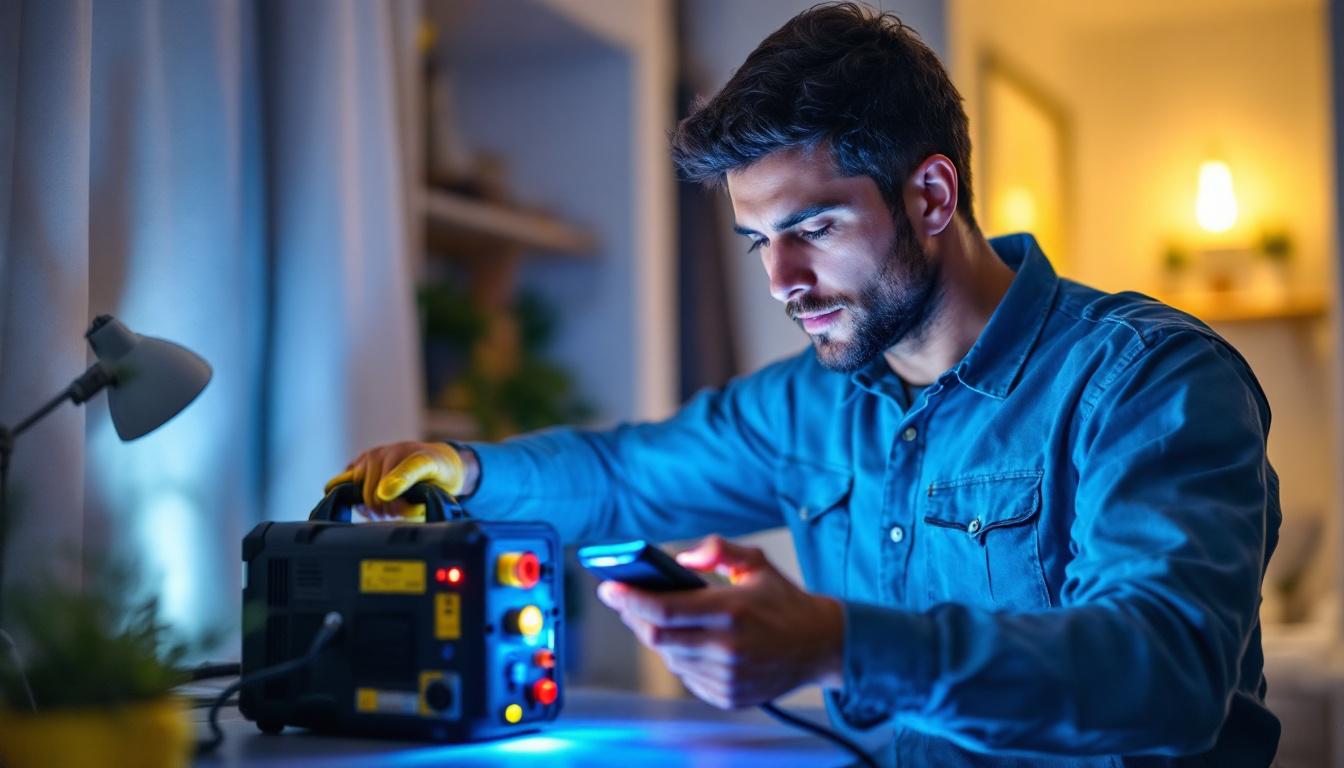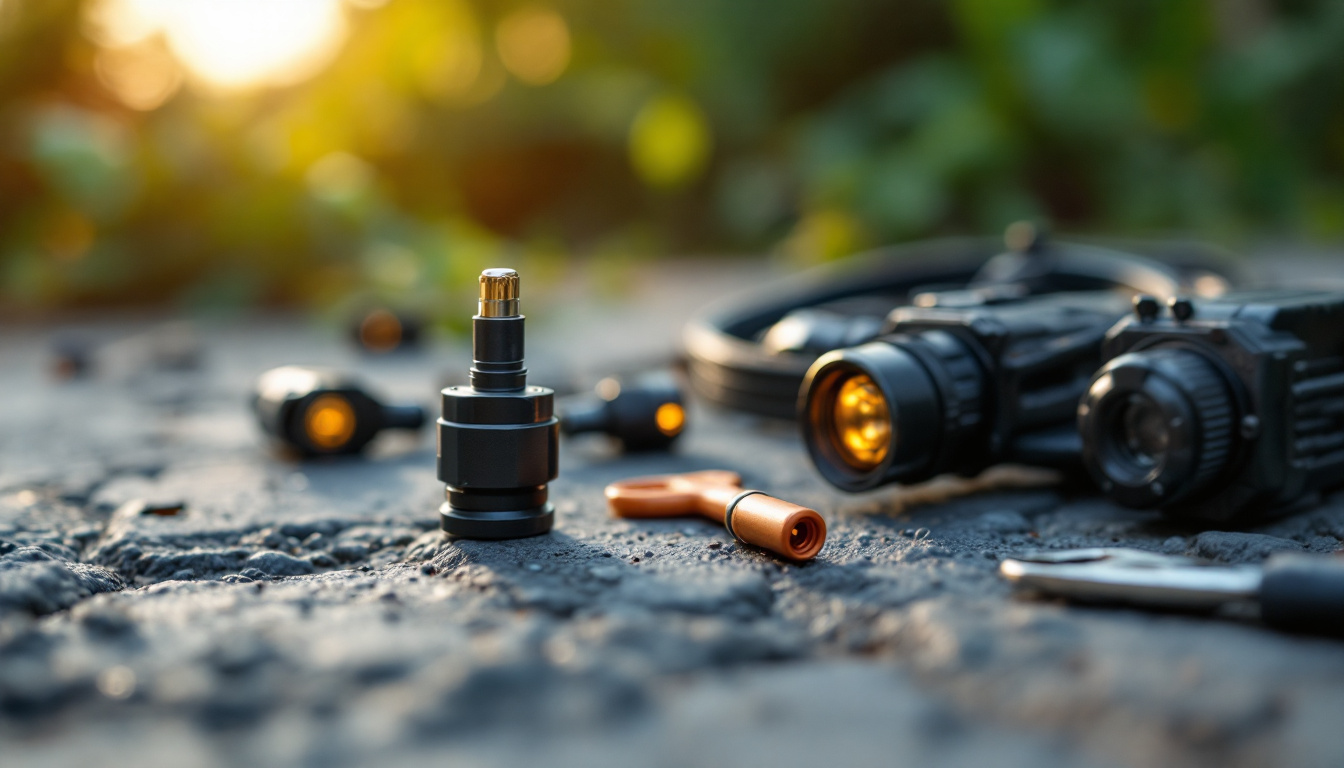
In the world of lighting, portable UV lighting has emerged as a game-changer for various applications, from disinfection to curing processes. However, despite its advantages, many lighting contractors make common mistakes when integrating this technology into their projects. Understanding these pitfalls can enhance efficiency, safety, and overall project success.
Portable UV lighting refers to mobile units that emit ultraviolet light, primarily used for disinfecting surfaces, air, and water. These tools are invaluable in settings where cleanliness is paramount, such as hospitals, laboratories, and food processing facilities. However, the effective use of portable UV lighting requires a solid understanding of its principles and applications. In recent years, the demand for portable UV lighting has surged, especially in response to global health crises, highlighting the need for efficient and effective disinfection methods in everyday environments, including schools and offices.
There are three primary types of UV light: UVA, UVB, and UVC. Each type serves different purposes and has varying effects on biological organisms. For instance, UVC light is particularly effective for disinfection, as it can destroy the DNA of bacteria and viruses. Understanding the differences between these types is crucial for contractors to select the appropriate equipment for their specific needs. UVA light, while less effective for disinfection, is often used in applications such as tanning beds and curing processes in the cosmetic industry. UVB light plays a role in vitamin D synthesis in the skin but is also associated with skin damage, making it important to consider safety measures when working with any UV light source.
Portable UV lighting can be used in various applications, including surface disinfection, air purification, and even curing adhesives and coatings. Each application has its unique requirements and best practices. For example, when using UV light for disinfection, it is essential to ensure that the light reaches all surfaces effectively, which may require moving the unit around or adjusting its angle. Additionally, the duration of exposure to UV light is critical; different pathogens require varying exposure times to achieve effective disinfection. In air purification, portable UV units can be integrated into HVAC systems or used as standalone devices to reduce airborne contaminants, improving indoor air quality significantly. Furthermore, the use of UV light in curing adhesives and coatings has revolutionized manufacturing processes, allowing for faster production times and stronger bonds, which are crucial in industries ranging from automotive to electronics.
Despite the potential benefits of portable UV lighting, many contractors fall into common traps that can lead to ineffective results or safety hazards. Recognizing these mistakes is the first step towards improving practices and outcomes.
One of the most significant mistakes contractors make is neglecting safety precautions. UV light can be harmful to skin and eyes, and exposure should be minimized. Contractors should always wear appropriate protective gear, including UV-blocking goggles and long-sleeved clothing, when operating portable UV lighting. Additionally, it is essential to ensure that bystanders are kept at a safe distance during use. Failure to adhere to these safety measures not only puts the contractor at risk but also endangers clients and coworkers who may be nearby. Regular safety briefings and reminders about the importance of protective equipment can help reinforce these practices and create a culture of safety on the job site.
Another common pitfall is a lack of training and knowledge regarding UV lighting technology. Contractors may not fully understand how UV light works, its effective application, or the specific requirements of the equipment they are using. Investing in training and education can significantly improve the effectiveness of UV lighting applications and reduce the risk of accidents. Furthermore, understanding the different types of UV light—such as UVA, UVB, and UVC—and their respective applications can enhance a contractor’s ability to choose the right equipment for the job. This knowledge can also help in troubleshooting common issues that arise during use, ensuring that contractors can achieve optimal results while minimizing downtime and resource waste.
Selecting the right equipment is crucial for achieving desired results. Many contractors make the mistake of choosing portable UV lighting units that are not suitable for their specific application. This can lead to ineffective disinfection or curing processes, ultimately affecting project outcomes. The repercussions of such choices can extend beyond just immediate project failures; they can also result in increased costs, project delays, and even damage to the reputation of the contractor. Therefore, a careful assessment of equipment suitability is essential before making a purchase.
When selecting portable UV lighting, it is vital to consider the intensity and wavelength of the emitted light. Different applications require different intensities; for instance, disinfection may require higher intensity than curing. Contractors should thoroughly evaluate the specifications of the equipment to ensure it meets the needs of their project. Additionally, understanding the specific wavelength ranges that are most effective for certain tasks can significantly enhance the efficiency of the process. For example, UV-C light, typically ranging from 200 to 280 nanometers, is highly effective for germicidal applications, while UV-A light, which ranges from 320 to 400 nanometers, is often used for curing applications. This knowledge allows contractors to make informed decisions that can lead to successful outcomes.
Every piece of equipment comes with manufacturer guidelines that detail proper usage, maintenance, and safety information. Ignoring these guidelines can lead to improper use and potential hazards. Contractors should familiarize themselves with these instructions and ensure that all team members are trained on the correct operation of the equipment. Furthermore, regular maintenance as outlined in the guidelines is essential to prolong the lifespan of the equipment and ensure optimal performance. Neglecting routine checks can lead to diminished effectiveness, increased energy consumption, and even safety risks, such as exposure to harmful UV radiation. By adhering to manufacturer recommendations, contractors not only protect their investment but also ensure a safer working environment for their teams.
Proper maintenance of portable UV lighting equipment is often overlooked. Neglecting maintenance can lead to decreased effectiveness and increased risk of malfunction. Regular checks and care can prolong the life of the equipment and ensure it operates at peak performance.
Keeping portable UV lighting units clean and properly stored is essential. Dust and debris can accumulate on the bulbs and lenses, reducing light output and effectiveness. Contractors should establish a routine for cleaning the equipment after each use and ensure it is stored in a safe, dry place to prevent damage.
Conducting regular inspections of portable UV lighting units can help identify potential issues before they become significant problems. This includes checking for any signs of wear and tear, ensuring that all components are functioning correctly, and replacing parts as needed. A proactive approach to maintenance can save time and resources in the long run.
Environmental factors play a significant role in the effectiveness of portable UV lighting. Many contractors fail to consider how factors such as distance, surface type, and ambient light can impact the performance of UV light. Understanding these elements is crucial for achieving optimal results.
The distance between the UV light source and the surface being treated is critical. The intensity of UV light diminishes over distance, so contractors should ensure that the light is positioned correctly to maximize exposure. Additionally, the duration of exposure is equally important; surfaces may require varying lengths of time under UV light to achieve effective disinfection or curing.
Different surfaces react differently to UV light. For instance, smooth surfaces may reflect UV light, while porous surfaces may absorb it. Contractors should evaluate the materials they are working with and adjust their approach accordingly. This may involve repositioning the UV light or increasing exposure times for certain surfaces.
Documentation is a critical aspect of any project, yet many contractors overlook the importance of recording the results of their UV lighting applications. Failing to document processes and outcomes can hinder future projects and prevent contractors from learning from their experiences.
Contractors should establish a system for tracking the effectiveness of their UV lighting applications. This can include recording the types of surfaces treated, exposure times, and observed results. Analyzing this data can provide valuable insights into what works best and help refine future practices.
Soliciting feedback from team members and clients can also contribute to continuous improvement. Understanding how the UV lighting applications were perceived and their effectiveness can guide future projects. Contractors should foster an environment where feedback is encouraged and used constructively.
Portable UV lighting offers tremendous benefits for lighting contractors when used correctly. However, common mistakes can undermine its effectiveness and pose safety risks. By understanding the principles of UV lighting, selecting the appropriate equipment, implementing safety measures, and maintaining proper documentation, contractors can significantly enhance their operations.
Investing time in training, maintenance, and careful planning will lead to better outcomes and greater client satisfaction. As the demand for effective disinfection and curing processes continues to grow, mastering portable UV lighting will be an invaluable asset for lighting contractors looking to stay ahead in the industry.
Ready to elevate your lighting projects with the best portable UV lighting solutions on the market? Look no further than LumenWholesale, where we provide contractors with top-quality, spec-grade lighting products at unbeatable wholesale prices. Say goodbye to inflated markups and hello to superior lighting products that meet the highest industry standards. With our hassle-free bulk buying options and free shipping, you can ensure your projects shine with reliability and high performance. Don’t compromise on quality or value—Wholesale Lighting at the Best Value is just a click away. Make the smart choice and partner with LumenWholesale for all your lighting needs.

Discover expert insights and best practices for installing solar shed lamps from seasoned lighting contractors.

Discover the pivotal role Sunpark Electronics plays in modern lighting installations.

Discover the top waterproof outdoor wire connectors that every lighting contractor should know about.

Illuminate your garage with precision using our ultimate LED lighting contractor checklist.